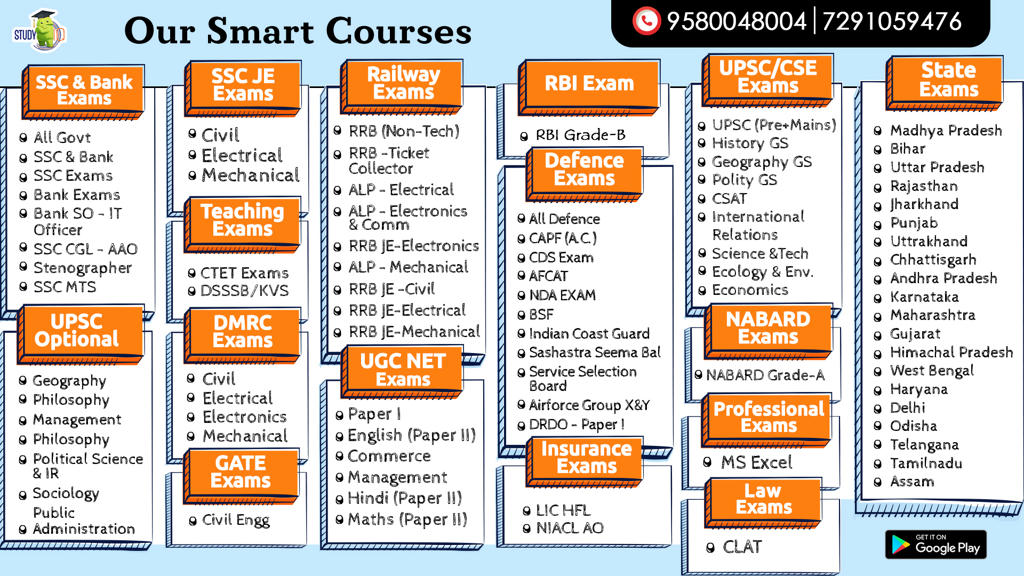Table of Contents
Mission for Integrated Development of Horticulture
- To promote the holistic growth of horticulture sector, including coconut through area-based regionally differentiated strategies which include research, technology promotion, extension, post-harvest management, processing and marketing in consonance with comparative advantage of each State/region and its diverse agri-climatic features.
- To encourage aggregation of farmers into farmer groups like FIGs/FPOs and FPCs to bring economy of scale and scope.
- To enhance horticulture production.
- To augment farmers’ income.
- To strengthen nutritional security.
- To improve productivity by way of quality germ-plasm, planting material, and water use efficiency through micro-irrigation.
- To support skill development and create employment generation opportunities for the rural youth in horticulture
National Food Security Mission
- In view of the stagnating food grain production and an increasing consumption need of the growing population, Government of India has launched this Centrally Sponsored Scheme, ‘National Food Security Mission’ in October 2007.
- The Mission met with an overwhelming success and achieved the targeted additional production of rice, wheat and pulses. The Mission continued during 12th Five Year Plan with new targets of additional production of food grains of 25 million tonnes of food grains comprising of 10 million tonnes rice, 8 million tonnes of wheat, 4 million tonnes of pulses and 3 million tonnes of coarse cereals by the end of 12th Five Year Plan.
- Major Components of NFSM
- National Food Security Mission – Rice (NFSM-Rice)
- National Food Security Mission – Wheat (NFSM-Wheat)
- National Food Security Mission – Pulses (NFSM-Pulses)
- National food Security Mission – Coarse cereals (NFSM-Coarse cereals)
- National Food Security Mission – Nutri cereals (NFSM- Nutri cereals)
- National Food Security Mission – Commercial crops (NFSM-Commercial crops)
- National Food Security Mission – Oilseeds and Oilpalm (NFSM-Oilseeds)
- National Food Security Mission – Seed village programme
National Mission for Sustainable Agriculture
- National Mission for Sustainable Agriculture (NMSA) has been made operational from the year 2014-15 which aims at making agriculture more productive, sustainable, remunerative and climate resilient by promoting location specific integrated /composite farming systems; soil and moisture conservation measures;
- comprehensive soil health management; efficient water management practices and mainstreaming rainfed technologies.
- To make agriculture more productive, sustainable, remunerative and climate resilient by promoting location specific Integrated/Composite Farming Systems;
- To conserve natural resources through appropriate soil and moisture conservation measures;
- To adopt comprehensive soil health management practices based on soil fertility maps, soil test based application of macro & micro nutrients, judicious use of fertilizers etc.;
- To optimize utilization of water resources through efficient water management to expand coverage for achieving ‘more crop per drop’ ;
- To develop capacity of farmers & stakeholders, in conjunction with other on – going Missions e.g. National Mission on Agriculture Extension & Technology, National Food Security Mission, National Initiative for Climate Resilient Agriculture (NICRA) etc., in the domain of climate change adaptation and mitigation measures;
- To pilot models in select blocks for improving productivity of rainfed farming by mainstreaming rainfed technologies refined through NICRA and by leveraging resources from other schemes/Missions like Mahatma Gandhi National Rural Employment Guarantee Scheme (MGNREGS), Integrated Watershed Management Programme (IWMP), RKVY etc.; and
Sub-mission on Agriculture Extension
- This scheme aims to strengthen the ongoing extension mechanism of State Governments, local bodies, etc. achieving food security and socio-economic empowerment of farmers, to forge effective linkages and synergy amongst various stake-holders, to institutionalize program planning and implementation mechanism, support HRD interventions, promote pervasive and innovative use of electronic and print media, interpersonal communication, and ICT tools, etc.
Sub-Mission on Seeds and Planting Material
- NMAET consists of 4 Sub Missions
- Sub Mission on Agricultural Extension (SMAE)
- Sub-Mission on Seed and Planting Material (SMSP)
- Sub Mission on Agricultural Mechanization (SMAM)
- Sub Mission on Plant Protection and Plant Quarantine (SMPP)
- This aims to increase the production of quality seed, to upgrade the quality of farm-saved seeds and increase SRR, strengthen the seed multiplication chain, and promote new methods and technologies in seed production, processing, testing, etc., to strengthen and modernize infrastructure for seed production, storage, quality, and certification, etc.
Sub-Mission on Agricultural Mechanisation
- There is a strong co-relation between farm power availability and agricultural productivity.
- Therefore, Sub-Mission on Agricultural Mechanization will focus on farm mechanization.
- The Sub-Mission will mainly cater to the needs of the small and marginal farmers through institutional arrangements such as custom hiring, mechanization of selected villages, subsidy for procurement of machines & equipments, etc.
- Sub Mission on Plant Protection and Plan Quarantine – the aim of this scheme is to minimize loss to quality and yield of agricultural crops from insects, pests, weeds, etc., to shield our agricultural bio-security from the incursions and spread of alien species, to facilitate exports of Indian agricultural commodities to global markets, and to promote good agricultural practices, particularly with respect to plant protection strategies and strategies.
- Integrated Scheme on Agriculture Census, Economics, and Statistics
- This aims to undertake the agriculture census, undertake research studies on agro-economic problems of the country, study the cost of cultivation of principal crops, fund conferences, workshops, and seminars
- Integrated Scheme on Agricultural Cooperation aims to provide financial assistance for improving the economic conditions of cooperatives, remove regional imbalances, to speed up cooperative development
- ISAM – Integrated Scheme on Agricultural Marketing – this scheme aims to develop agricultural marketing infrastructure; to promote innovative technologies and competitive alternatives in agriculture marketing infrastructure
- NeGP-A – National e-Governance Plan aims to bring farmer-centric & service-oriented programs; to improve access of farmers to information and services throughout the crop-cycle and enhance the reach
Q.)The Green Revolution has led to marked increase in:
- 1. Productivity of wheat
- 2. Productivity of pulses
- 3. Regional inequalities
- 4. Inter-person inequalities of the statements:
a) 1 and 2 are correct b) 3 and 4 are correct c) 1, 3 and 4are correct d) All are correct
Q.)Who is the father of Green Revolution in the World?
- A. Norman Borlaug
- B. M.S Swaminathan
- C. Raj Krishna
- D. R.K.V Rao
Q.)Who was the father of Green Revolution in India?
- A. Norman Borlaug
- B. M.S Swaminathan
- C. Raj Krishna
- D. R.K.V Rao
Q.)The Green Revolution in India was an introduction of high-yielding varieties (HYV) of seeds for _________.
- A. Millet
- B. Pulse
- C. Wheat
- D. Oilseed
Q.)Consider the following
- I. Continued expansion of farming areas;
- II. Double-cropping existing farmland;
- III. Using seeds with improved genetics.
Which of the above statement (s) is/are not the one of the three basic elements in the method of the Green Revolution?
- Only I
- Only II
- I and III
- None of the above
Latest Burning Issues | Free PDF

























 WhatsApp
WhatsApp